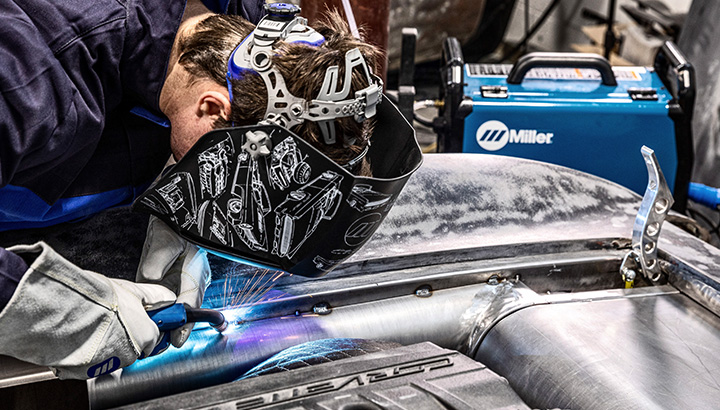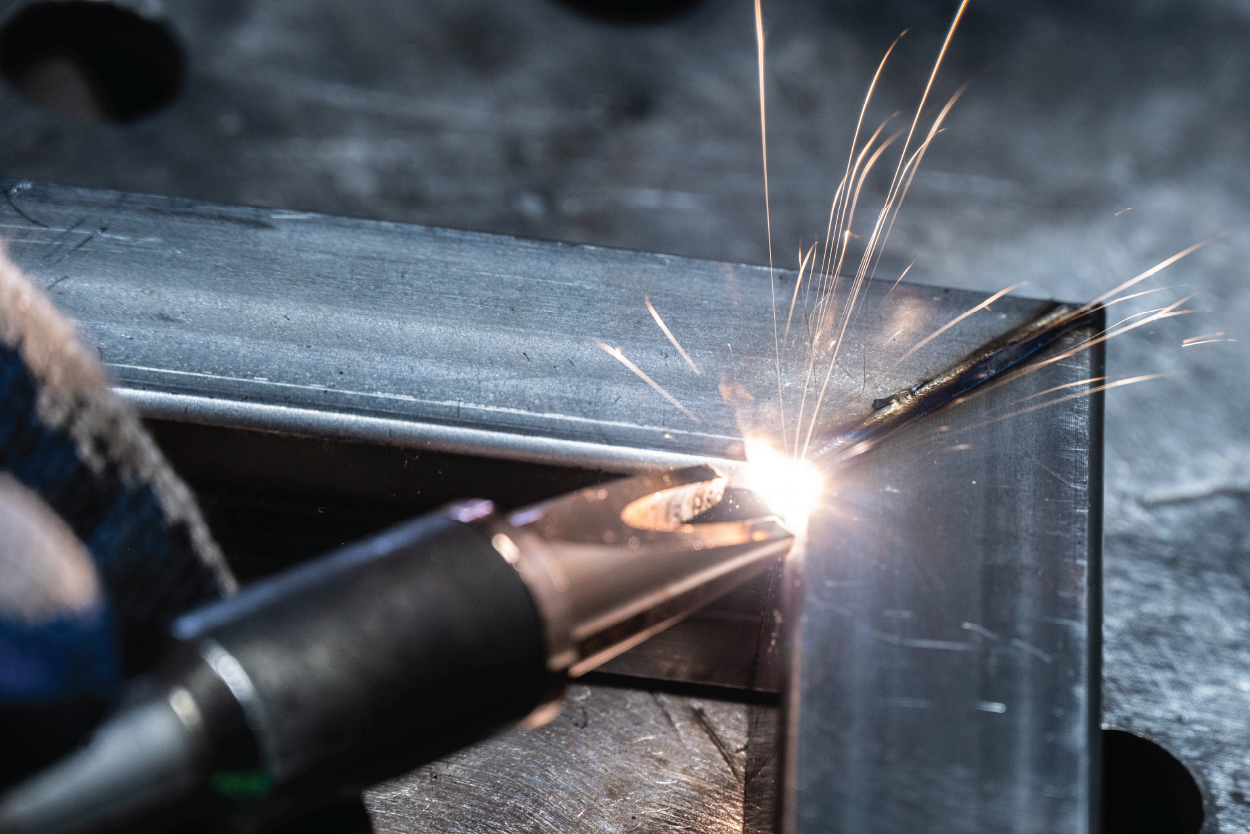All Regarding Welding: Trick Insights Into Techniques and Finest Practices for Success
Welding includes a selection of methods, each matched for particular products and applications. Understanding these techniques, such as GMAW, SMAW, and TIG, is important for attaining optimal results. Moreover, the appropriate devices and safety and security practices can not be ignored. As prep work and fixing play vital roles in the welding process, grasping these aspects can significantly enhance the high quality of the final product. What are the essential aspects that assure a successful weld?
Recognizing Different Welding Strategies
Welding techniques incorporate a selection of techniques, each matched to specific applications and materials. Among the most common techniques are Gas Steel Arc Welding (GMAW), Protected Metal Arc Welding (SMAW), and Tungsten Inert Gas Welding (TIG) GMAW, also called MIG welding, is popular for its speed and flexibility, making it optimal for thin products. SMAW, or stick welding, is preferred for its simpleness and performance in outdoor settings, specifically with thicker metals. TIG welding offers accuracy and control, making it suitable for complex job and non-ferrous steels (Belgrade Welding). Each method has its unique benefits and considerations, enabling welders to choose the best technique based upon the job's needs, product kind, and wanted results. Understanding these methods is crucial for successful welding
Vital Welding Equipment and Tools
While different welding strategies call for certain abilities, the right devices and tools are just as essential for attaining high quality outcomes. Important welding devices includes welding machines, which vary depending on the method-- such as MIG, TIG, or stick welding. Protective gear, including aprons, helmets, and gloves, guarantees security and comfort during the procedure. Furthermore, components and clamps assist safeguard products in place, making sure accuracy in welds. Consumables like welding poles, wire, and shielding gas are likewise crucial elements that influence the quality of the weld. Furthermore, tools such as cutters and grinders facilitate surface prep work and post-weld completing, adding to a professional result. Purchasing high-quality equipment inevitably boosts the effectiveness and performance of welding projects.
Safety And Security Practices in Welding
Correct security techniques are essential in the welding sector to secure workers from possible threats. Welders should use suitable personal protective devices (PPE), including safety helmets with appropriate shading, handwear covers, and flame-resistant clothes. Ample air flow is vital to reduce direct exposure to hazardous fumes and gases produced throughout the welding process. In addition, workers should be learnt the appropriate handling of welding tools to avoid accidents. Fire safety and security steps, such as maintaining flammable products away from the welding location and having fire extinguishers readily offered, are needed. Normal inspections of tools and offices can aid determine potential dangers before they lead to accidents. By sticking to these safety techniques, welders can produce a safer working setting and decrease threats connected with their profession.
Preparing Materials for Welding
Preparing materials for welding is an important action that greatly influences the high quality and stability of the final product (Belgrade Welding). Correct preparation involves cleaning the surface areas to get rid of impurities such as rust, dirt, and oil, which can jeopardize the weld. Techniques such as grinding, sanding, or making use of solvents are typically used to attain a tidy surface. Furthermore, guaranteeing that the materials fit together well is vital; gaps can lead to weak welds. It's likewise crucial to consider the positioning and positioning of the elements, as this will certainly affect the convenience of welding and the last outcome. Lastly, selecting the appropriate filler product and guaranteeing compatibility with the base steels is crucial for accomplishing solid, long lasting welds
Tips for Achieving High-Quality Welds
Attaining high-grade welds calls for attention to detail and adherence to best methods throughout the welding procedure. Proper joint preparation is essential, guaranteeing surfaces are tidy and complimentary from impurities. Choosing the appropriate filler material and welding method based on the base steels is critical for perfect bonding. Keeping regular travel rate and angle while welding can promote and stop defects uniformity. Additionally, controlling heat input is vital; too much warm can lead to bending and deteriorated joints. If necessary, consistently examining the welds during the procedure allows for immediate adjustments. Lastly, using ideal post-weld therapies, such as cleaning and anxiety alleviation, can enhance the toughness and honesty of the weld, ultimately guaranteeing a successful end result.
Troubleshooting Common Welding Issues
Welding commonly provides challenges that can influence the top quality and honesty of the end product. Typical problems such as porosity, irregular weld grains, and overheating can develop, each calling for certain repairing methods. Recognizing these problems is vital for welders to enhance their abilities and attain perfect outcomes.
Porosity Problems Described
Porosity can typically be forgotten, it continues to be an essential problem in welding that can compromise the stability of a completed item. Porosity describes the presence of tiny gas pockets within the weld bead, which can weaken the joint and lead to early failure. This trouble typically occurs from impurities, dampness, or inappropriate protecting gas protection throughout the welding process. To reduce porosity, welders should confirm that the base products are clean and dry, make use of ideal securing gases, and maintain regular welding criteria. On a regular basis evaluating the devices and setting can likewise assist identify possible problems before they show up in the weld. Addressing porosity properly is important for accomplishing solid, long lasting welds that fulfill quality requirements.

Inconsistent Weld Beans
Irregular weld grains can considerably impact the high quality and strength welding gases of an ended up product. Numerous aspects add to this concern, including inappropriate travel rate, wrong amperage settings, and inconsistent electrode angles. When the welder moves as well promptly, a bead might appear slim and do not have infiltration, while relocating as well slowly can cause too much accumulation. In addition, utilizing the wrong amperage can cause either undercutting or too much spatter, both of which concession weld honesty. The welder's technique, such as inconsistent lantern movement, can likewise bring about uneven grain look. To alleviate these issues, welders should focus on maintaining consistent, regulated activities and ensuring correct tools setups to attain uniformity in their welds. Uniformity is vital to attaining solid and reliable welds.
Getting Too Hot and Bending Issues
Extreme heat throughout the welding procedure can result in significant getting too hot and warping concerns, influencing the architectural integrity of the work surface. These troubles often manifest as distortion, which can endanger alignment and fit-up, making more setting up testing. Factors contributing to overheating include the selection of welding parameters, such as voltage and take a trip speed, as well as the type of material being welded. To minimize these concerns, welders ought to keep consistent travel rate and proper warm input while monitoring the work surface temperature. Furthermore, pre-heating or post-weld heat therapy can assist reduce stress and anxieties created by fast cooling - Fabrication. Normal examination and adherence to finest techniques are vital in stopping overheating and making certain the durability and dependability of welded structures
Regularly Asked Questions
What Are the Profession Opportunities in the Welding Industry?
The welding industry uses diverse career possibilities, including settings as welders, inspectors, educators, and engineers. Experts can operate in manufacturing, construction, aerospace, and vehicle markets, taking advantage of solid need and competitive wages in numerous roles.
Exactly How Can I Enhance My Welding Rate Without Compromising Quality?
To boost welding rate without compromising high quality, one should practice reliable techniques, maintain equipment, optimize setups, and boost hand-eye control. Routine training and looking for responses can also greatly add to accomplishing much faster, why not look here premium welds.
What Certifications Are Available for Welders?
Countless accreditations exist for welders, consisting of those from the American Welding Culture (AWS), the National Center for Building And Construction Education And Learning and Research (NCCER), and various industry-specific organizations. These qualifications improve employability and demonstrate ability efficiency.
Just How Does Welding Influence the Qualities of Metals?
Welding affects the properties of steels by altering their microstructure, which can cause modifications in toughness, firmness, and ductility. Heat input and cooling prices throughout the process substantially affect these product attributes.
Can I Bonded Dissimilar Metals Together?
